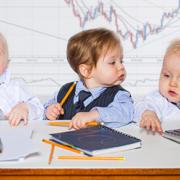Answers to your tax season questions
The IRS announced it will open the 2024 income tax return filing season on January 29. That’s when the tax agency will begin accepting and processing 2023 tax year returns.
Here are answers to seven tax season questions we receive at this time of year.
1. What are this year’s deadlines?
The filing deadline to submit 2023 returns or file an extension is Monday, April 15, 2024, for most taxpayers. Taxpayers living in Maine or Massachusetts have until April 17, due to state holidays. If taxpayers reside in a federally declared disaster area, they may have additional time to file.
2. When is my return due if I request an extension?
If you’re requesting an extension, you’ll have until October 15, 2024, to file. Keep in mind that an extension of time to file your return doesn’t grant you any extension of time to pay your taxes. You should estimate and pay any taxes owed by the April 15 deadline to avoid penalties.
3. When should I file?
You may want to wait until close to the deadline (or file for an extension), but there are reasons to file earlier. Doing so provides some protection from tax identity theft.
4. What’s tax identity theft and how does early filing help protect me?
Typically, in a tax identity theft scam, a thief uses another person’s information to file a fake tax return and claim a fraudulent refund early in the filing season.
The legitimate taxpayer discovers the fraud when filing a return. He or she is then told by the IRS that the return is being rejected because one with the same Social Security number has already been filed for the tax year. The victim should be able to eventually prove that his or her return is the valid one, but it can be time consuming and frustrating to straighten out. It can also delay a refund.
Filing early provides some proactive defense. The reason: If you file first, the tax return filed by a potential thief will be rejected.
5. Are there other benefits to filing early?
Besides providing protection against tax identity theft, another benefit of early filing is you’ll get any refund sooner. According to the IRS, “most refunds will be issued in less than 21 days.” The time may be shorter if you file electronically and receive a refund by direct deposit into a bank account. Direct deposit also avoids the possibility that a refund check could be lost, stolen, returned to the IRS as undeliverable or caught in mail delays.
6. When will my W-2s and 1099s arrive?
To file your tax return, you’ll need all of your Forms W-2 and 1099. January 31, 2024, is the deadline for employers to file 2023 W-2s and, generally, for businesses to file Form 1099s for recipients of any 2023 interest, dividends or reportable miscellaneous income payments (including those made to independent contractors).
If you haven’t received a W-2 or 1099 by early February, first contact the entity that should have issued it. If that doesn’t work, ask us how to proceed.
7. When can you prepare my return?
Contact us as soon as possible for a tax preparation appointment. Separate penalties apply for failing to file and pay on time — and they can be quite severe. Even though the IRS isn’t beginning to process returns until January 29, they can be prepared before that. We can help ensure you file an accurate, timely return and receive all the tax breaks to which you’re entitled.
© 2024












